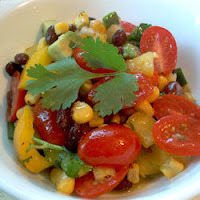 The Drug that Is Being Forced Daily on You and Your Family... Fluoride
The Drug that Is Being Forced Daily on You and Your Family... Fluoride As our American water supply is fluoridated by our government, fluoride becomes the only drug that's forced on the mass public without a personal prescription that's given to newborns, the elderly, healthy and sick alike. As if that's not alarming enough, what's really disturbing is when we look at what negative health effects can result - even in doses comparable to what we consume in our regular water and food supply. The effect of this fluoride is proven to cause hypothyroidism, osteoarthritis and rheumatoid arthritis. Some studies are even revealing that it may have negative brain effects with lowering I.Q. in children and other damage.
In 2005 the Center for Disease control admitted that that 32% of our children in the US are getting too much fluoride, even non-floridated areas of the U.S. have shown effects of dental fluorosis with negative health effects resulting from too much floride exposure during their childhood. Damage to the tooth from too much floride exposure can show up as white or brown spots on the teeth or splotches or lines. In more severe cases, the surface layer of the teeth can actually begin flaking or chipping off as their is damage to the tooth. This is not only a terrible cosmetic effect that occurs to one's teeth - but it's a sign of an over-all body toxicity that can be present long before there are visible signs of dental fluorosis in the teeth. In older adults this can result in dangerous, fragile bones.
According to the World Health Organization, “Early cases [of skeletal fluorosis]… may be misdiagnosed as rheumatoid or osteoarthritis.” (“Fluoride and Human Health,” 1970, pp. 238-249). In fact, the first symptom of early fluoride poisoning (fluorosis) is aching joints and bone and joint pain. Fluoride causes symptoms identical to arthritis and it's extremely difficult to distinguish early fluoride poisoning from osteoarthritis - this causes a lot of misdiagnosis. According to the CDC, one in three adults have some form of arthritis.
Hypothyroidism (an underactive thyroid) is a condition in which your thyroid gland doesn't produce enough of certain important hormones. According to the Mayo Clinic, this condition upsets the normal balance of chemical reactions in your body. It can seldom cause symptoms in the early stages, yet over time, untreated hypothyroidism can cause a number of health problems, such as obesity, joint pain, infertility and heart disease. Shockingly,in the 1940's and 1950;s, fluoride was actually used in the scientific community as a successful treatment in hypothyroidism to lower the hormone production and at levels comparable to what's in our water supply!
Fluoridation in our water is especially damaging to infants and has been linked to damaging the brain and lowering I.Q. levels. In the past several years, the American Dental Association has finally begun warning against using water with “no or low levels of fluoride” to reconstitute baby formula. With newborn infants the risk from fluoride is greatly magnified as the blood – brain barrier is not fully developed. Therefore, if they are drinking formula with fluoride that are getting a huge amount of fluoride in their developing brain. A number of studies from China state that fluoridated water reduces the IQ level in children. The National Academy of Sciences even claims that “the consistency of the results appears significant enough to warrant additional research on the effects of fluoride on intelligence.” [National Research Counsel 2006]. Scientists from the EPA's National Health and Environmental Effects Research Laboratory have classified fluoride as a "chemical having substantial evidence of developmental neurotoxicity". Consistent with the EPA's conclusion, a continually growing body of human and animal research strongly suggests that fluoride can damage the developing brain. How can something this damaging be in our water supply you may ask? Well, similar, accepted toxicity in our environment has happened before... Many doctors feels that issue of fluoride in our water supply today is at a comparable level of understanding as lead was it the early 70s in water pipes and paint in every home. At that time, scientists knew that high levels of lead could cause brain damage in children and other health effects but they felt that lower levels of lead were okay.
Over thousands of medical, scientific, and environmental professionals have called for an end to fluoridation worldwide. Here is a detailed, yet easy to understand, video that features doctors of dentistry, pathology, fetal patho-toxicologist, environment chemist and other specialists warning about the fluoridation of our water.
According to the World Health Organization, “Early cases [of skeletal fluorosis]… may be misdiagnosed as rheumatoid or osteoarthritis.” (“Fluoride and Human Health,” 1970, pp. 238-249). In fact, the first symptom of early fluoride poisoning (fluorosis) is aching joints and bone and joint pain. Fluoride causes symptoms identical to arthritis and it's extremely difficult to distinguish early fluoride poisoning from osteoarthritis - this causes a lot of misdiagnosis. According to the CDC, one in three adults have some form of arthritis.
Hypothyroidism (an underactive thyroid) is a condition in which your thyroid gland doesn't produce enough of certain important hormones. According to the Mayo Clinic, this condition upsets the normal balance of chemical reactions in your body. It can seldom cause symptoms in the early stages, yet over time, untreated hypothyroidism can cause a number of health problems, such as obesity, joint pain, infertility and heart disease. Shockingly,in the 1940's and 1950;s, fluoride was actually used in the scientific community as a successful treatment in hypothyroidism to lower the hormone production and at levels comparable to what's in our water supply!
Fluoridation in our water is especially damaging to infants and has been linked to damaging the brain and lowering I.Q. levels. In the past several years, the American Dental Association has finally begun warning against using water with “no or low levels of fluoride” to reconstitute baby formula. With newborn infants the risk from fluoride is greatly magnified as the blood – brain barrier is not fully developed. Therefore, if they are drinking formula with fluoride that are getting a huge amount of fluoride in their developing brain. A number of studies from China state that fluoridated water reduces the IQ level in children. The National Academy of Sciences even claims that “the consistency of the results appears significant enough to warrant additional research on the effects of fluoride on intelligence.” [National Research Counsel 2006]. Scientists from the EPA's National Health and Environmental Effects Research Laboratory have classified fluoride as a "chemical having substantial evidence of developmental neurotoxicity". Consistent with the EPA's conclusion, a continually growing body of human and animal research strongly suggests that fluoride can damage the developing brain. How can something this damaging be in our water supply you may ask? Well, similar, accepted toxicity in our environment has happened before... Many doctors feels that issue of fluoride in our water supply today is at a comparable level of understanding as lead was it the early 70s in water pipes and paint in every home. At that time, scientists knew that high levels of lead could cause brain damage in children and other health effects but they felt that lower levels of lead were okay.
Over thousands of medical, scientific, and environmental professionals have called for an end to fluoridation worldwide. Here is a detailed, yet easy to understand, video that features doctors of dentistry, pathology, fetal patho-toxicologist, environment chemist and other specialists warning about the fluoridation of our water.
What can you do?
The Fluoride Action Network has a plan to end water fluoridation in the United States. You can join the anti-fluoride movement by contacting the representative for your area below. Send letters to your U.S. senators and representatives calling for an end to water fluoridation in the United States and a new congressional hearing. Send letters to your state legislators calling for an end to local water fluoridation. If you are a mom and want to see an end to water fluoridation, you can also contact a new group called "Moms Against Fluoridation" by sending an email to: info@MomsAgainstFluoridation.org.
Black Bean and Salsa Soup Recipe
INGREDIENTS:
2 (15 ounce) Cans Black Beans
2 (15 ounce) Cans Black Beans
1 1/2 Cups Vegetable Broth, Chicken Broth or Beef Broth
1 Cup Chunky Salsa
1 tsp Ground Cumin
1 Cup Chunky Salsa
1 tsp Ground Cumin
Salt and Pepper to Taste
DIRECTIONS:
1. In a blender, combine beans, broth, salsa, and cumin. Blend until fairly smooth.
2. Heat the bean mixture in a saucepan over medium heat until thoroughly heated.
3. Serve the soup topped with Non-Fat Greek Yogurt (or sour cream), shredded cheese and chopped cilantro, green onions, or crushed non-hydrogenated tortilla chips
Alterations and Tips: My family likes added texture to to this soup, so I only blend half of the mixture. I've also thrown in some pre-cooked brown or white rice - a great way to use up some leftovers and add additional texture. Leftover, cooked, chopped chicken or ground beef also make a great addition. Leftover soup can be cooked down to make a nice Mexican spread for tortillas for lunch (just add spinach, sour cream and cheese) in the wrap.













